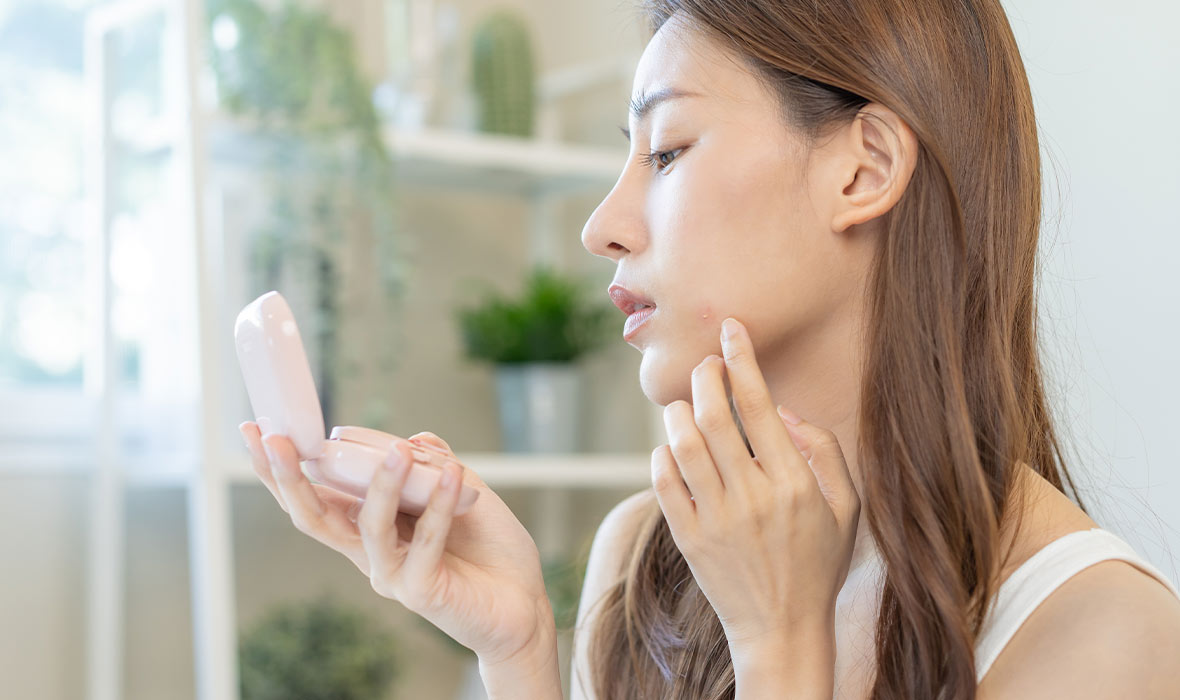Even if you’ve dealt with acne for years, this might be the first time you’re hearing about (and reading about) pustules. A type of pimple, pustules are bumps on your skin that are filled with pus, oil, and dead skin cells. Though they look very similar to whiteheads, these two types of acne have subtle differences that can help you differentiate between the two and find the best treatment.
What does a whitehead look like?
Whiteheads are small, white or yellow acne bumps on your skin. They appear when a buildup of oil on the skin (sebum) mixes with dead skin cells to block off the opening of one of the pores in your skin. Because whiteheads are closed off from oxygen, the trapped sebum maintains a whiteish, yellowish color. In open comedones, also known as blackheads, the trapped sebum is exposed to oxygen, turning it black. Since whiteheads are caused by trapped oil, oilier skin types are more prone to them.
What does a pustule look like?
Pustules feature a bit of yellowish pus that can ooze if the pustule is pierced. Pustule acne forms in much the same way as whiteheads at first, with excess oil and dead skin cells clogging a pore. However, after this happens, acne-causing bacteria can infiltrate the clogged pore, leading to redness and irritation. Pustules can also be tender when touched.
The differences between whiteheads and pustules
Whiteheads and pustules both normally appear as small bumps, so it can be easy to mistake the two. You can essentially consider pustules to be whiteheads with the added influence of acne-causing bacteria. This means pustules can come with redness, irritation and of course, pus. Generally speaking, mild pain or tenderness is unique to pustules. Make sure not to pop your whiteheads without a dermatologist or aesthetician’s help, or bacteria can enter the pores and turn your whitehead into a pustule.
Pustule vs whitehead treatment
Both pustules and whiteheads usually heal on their own over time. However, this can take longer than you’d like, especially if they’re visible on your face. Want to treat your whiteheads and pustules as you help prevent new ones from forming?
The Proactiv+® Acne Treatment System is perfect for fighting both pustules and whiteheads. This routine has three steps that address the key factors that cause the formation of both.
The Skin Smoothing Exfoliator in this system has benzoyl peroxide and its exfoliating beads gently smooth away excess dirt, oil and other impurities. Exfoliation is a key method in keeping impurities off your skin and preventing them from clogging pores.
The Pore Targeting Treatment included uses benzoyl peroxide to fight acne deep in your pores. Benzoyl peroxide in particular is great at targeting the acne-causing bacteria that is so common in pustules.
Finally, the Complexion Perfecting Hydrator, the last step in the 3-step system, is the moisturizer included with this acne-fighting system that helps brighten your skin tone, and fade the look of post-acne marks. Keeping your skin moisturized is vital to ensuring it doesn’t overproduce your skin’s natural, hydrating oil, which can lead to breakouts. With the dermatologist-tested Proactiv+ Acne Treatment System, all you have to do is follow the 3 simple steps to clearer skin!
The bottom line
Dealing with different types of acne can be tough. Proactiv® makes it easy to find the proactiv acne treatment system that’s right for your unique skin.


